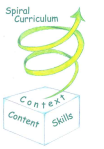
Last week the counselors in my district were asked to present information on how bullying is addressed in each of our schools, and I thought it might be helpful to highlight some of what my counseling partner, Erica, and I shared.
We start from the premise that bullying, bystander, and target behaviors are often a result of lagging skills in the areas of empathy, problem solving, conflict resolution, social thinking, self-monitoring, and/or self-advocacy. To build kids’ skills, we teach a developmental, spiraling bullying prevention curriculum K-5. For each grade, bullying is defined in a way that is meaningful and can be understood by students at that level. We have found that the more familiar the kids are with the bullying definition, the more likely they are to stand up to bullying (for themselves and others), report the bullying to an adult, and change their own bullying behaviors. Some of our lessons have been adapted from a variety of materials. We have created many of them ourselves. In these classes, the kids learn language and expectations that we refer to when working with small groups and individuals around issues of conflict and bullying. The administrators and many of the teachers also use the language and expectations when addressing behavior and handling discipline issues.
Kindergarten
Second Step (taught by counselor and teacher) provides foundational skill-building with units in empathy, emotion management, problem solving.
Bullying definition: All social behaviors are labeled as “friendly” or “unfriendly.” The term “bullying” may be used to describe behavior in individual situations, but is not taught directly.
1st Grade
(1). Conflict Resolution unit focusing on empathy, listening, problem solving, and responsibility. (2) Bullying unit focusing on telling the difference between bullying and mean behavior, including others, and reporting to an adult at school.
Bullying definition: A situation is bullying when:
- mean behavior happens over and over, or
- a group is being mean to an individual, or
- it involves a threat
2nd Grade
(1) Social Thinking unit focusing on managing behavior and understanding that behavioral choices affect how people think and feel about us. (2) Conflict Resolution unit focusing on empathy, de-escalating conflict, assertiveness, restitution, and friendship skills. (3) Bullying unit focusing on identifying when a situation is bullying, assertiveness, and reporting to an adult at school.
Bullying definition: A situation is bullying when it:
- is done on purpose to hurt, and
- happens over and over, and
- someone has more control
3rd Grade
(1) Social Thinking unit focusing on changing unexpected behaviors and understanding that behavioral choices affect how others think and feel about us. (2) Conflict Resolution unit focusing on empathy, assertiveness, problem-solving, de-escalating conflict, and identifying and addressing feelings that influence behavior. (3) Bullying unit focusing on preventing and stabilizing imbalances of power, assertiveness for self and for others who are being bullied, and accepting differences.
Bullying definition: A situation is bullying when it:
- is done on purpose to hurt, and
- happens over and over, and
- involves an imbalance of power
4th Grade
(1) Social Thinking unit focusing on changing and replacing unexpected behaviors and understanding how behavioral choices impact others’ thoughts, feelings, and behaviors toward us. (2) Conflict Resolution unit focusing on empathy, problem-solving, assertiveness, de-escalating conflict, identifying and addressing feelings that influence behavior, changing thoughts in order to change feelings and behavior. (3) Bullying unit focusing on identifying different kinds of bullying (verbal, physical, social, intimidation), preventing and stabilizing imbalances of power, identifying and using a broad range of strategies for responding to bullying of self and others, and cyber-bullying.
Bullying definition:
- is done on purpose to hurt, and
- happens over and over, and
- involves an imbalance of power, and
- is upsetting to the target
5th Grade
(1) Social Thinking review focusing on changing and replacing unexpected behaviors and understanding how behavioral choices impact others’ thoughts, feelings, and behaviors toward us. (2) Bullying unit focusing on others’ invisible differences and how they might make people have behaviors that are difficult to be around, managing situations where people do not stop doing annoying things when you ask them to, cyber-bullying, and sexual harassment.
Bullying definition: Same as 4th grades.

Trackbacks/Pingbacks